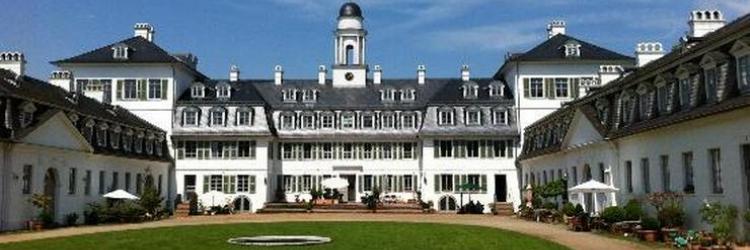Travel destinations Comments: 0 Apr 19, 2017
The Hessian metropolis Offenbach am Main is a large city with many faces and above all known as the headquarters of the German Weather Service beyond the borders. The city is an educational center in Hesse and consists of different districts, which have their own charm. Offenbach has a population of 126,934. In the 20th century the city's economy was dominated by the machine-building and leather industries, and it was also a major center of the typography and design industries. Other industries are the automotive and pharmaceutical industries. During the Second World War the city suffered heavily from bombing by the Allied Forces. More than half of the city's population has a non-German background, with Turks, former Yugoslavs, Arabs, Italians, Greeks, and Poles as major groups.
The Isenburg Castle as a renaissance building is the landmark of the city. Offenbach was a center of the leather industry. The German Leather museum is one of the attractions of the metropolis and is a multi-section museum, which also houses the largest Shoe museum in Europe. In the city center, classicism plays a role in the cityscape. The inner city with the Frankfurter Strasse is a great place to go shopping. Here you can find the central pedestrian zone or the Wilhelmsplatz. The eastern inner city forms the Mathildenviertel, where many foundations are still preserved because they were not destroyed during the war. Here, the Berliner Straße with the City Tower and the Town Hall is a popular street, which was created in the 1950s.
Offenbach am Main is the fifth largest city in the state of Hesse and borders Frankfurt am Main. The educational metropolis extends along the southern and south-eastern banks of the river Main. Offenbach and Frankfurt are located on the Mainbogen, which stretches to the port of Offenbach. Offenbach is located on the left bank of the river Bogen with its city parts such as Offenbach-Bügel.
Offenbach and Frankfurt are today a networked settlement area. The geographic center of the city is quite difficult to spot as Offenbach rises west and north into Frankfurt's urban area. Offenbach is a quite green city, which was created above all through industrialization and was destroyed in the Second World War by bomb attacks. Around one third of the city area was destroyed by the Allied Forces air raids. Traffic roads like Berliner Strasse were built only after the war. The suburbs are located in the east of Müllheim am Main or Obertshausen.
The cultural attractions of Offenbach am Main include the Leather museum, the House of City History and the Klingspor Museum of Art and Writing in the Büsing Palace. The neo-baroque Büsing-Palace borders Offenbach's city park and is one of the most representative structures of the Main metropolis. The Offenbach Capitol, built as a cultural and event center, was built in the neoclassical style. In the early 20th century the building was a synagogue.
The City Hall Offenbach was built from the 1960s is one of the largest venues in the Rhine-Main region and was modernized in the 1990s. There are numerous events taking place from pop concerts to boxing matches. The city's attractions include the large parks such as the Leonhard-Eißnert-Park on the Bieberer mountain. The Bieberer mountain is connected to the traditional football stadium. The Offenburger Kickers played here until 2011, then the old stadium was demolished and a modern football staduim was built in the same place.
The Mainufer with the large car park is a starting point for getting to know the city. Upstream towards Bürgel and Rumpenheim it is calmer than in the urban part towards Frankfurt with the city center. An interesting place is the Wilhelmsplatz with the historical buildings and the Weekly market. The Frankfurter Strasse, Herrenstrasse or the Große Marktstrasse are ideal for shopping.
The historic streets with flair in Offenbach include the Schloßstraße or the French alley. Along these streets is the Old town, which was rebuilt after the war. Today's city center with modern buildings is located in a square around the Berliner Strasse or Kaiserstraße. Offenbach also has the beautiful parks, such as the Dreieichpark nearby Parkstrasse and Frankfurter Straße. The park in the west of the city was the first public park and offers relaxing walks in an idyllic setting.


 RS
RS  ME
ME  HR
HR  BA
BA  RU
RU  MK
MK  AL
AL  ES
ES  DE
DE  IT
IT  CN
CN  NL
NL  SE
SE  FR
FR 






Write a comment